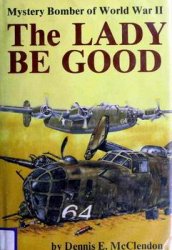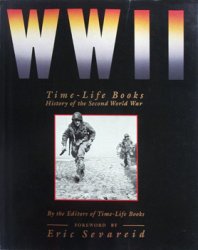Governments can obtain the resources needed to fight a war in many ways: (1) commandeering, including drafting soldiers, confiscating food and other raw materials, and appropriating living quarters for soldiers; (2) capturing resources from the enemy; (3) receiving voluntary contributions from citizens or allies; (4) selling existing assets such as land owned by the government; (5) taxing; (6) borrowing; and (7) printing money. The latter three—taxing, borrowing, and printing money—are often singled out as the three ways of financing wars. They are by far the main ways that the United States has acquired the money required to mobilize its resources for major wars.
In 1916, Congress levied an estate tax to help finance rearmament. Populist reformers who wanted to redistribute the wealth of the “Robber Barons” had long advocated this tax. But at the federal level it had been successfully resisted on the grounds that it was needed only in wartime. World War I was the first time it was imposed since the Spanish American War. After its passage in 1916, however, the estate tax became a permanent but small part of the federal revenue system.
On October 3, 1917, after considerable wrangling, Congress passed the War Revenue Act. This act increased corporate and personal income taxes (the rate in the top bracket was raised to 70 percent) and established excise, excess profits (for business), and luxury taxes. Table 21.1 shows the total financial cost of the war and how it was distributed among various sources of finance.
Taxation was important, but borrowing was far more important, accounting for 61 percent of total financing. Why did Congress prefer to borrow? One reason may be that borrowing concealed some of the costs of the war. When taxes are raised, it is altogether too clear who is doing what to whom. It could also be argued that the war was an investment—“to make the world safe for democracy,” in President Wilson’s phrase. Since future generations would benefit, why should the current generation bear all the burden of the war? Raising taxes high enough to finance all of the war, moreover, would have reduced work effort. It is better, many economists now believe, to use borrowing to “smooth” taxes over time.
Note: Total wartime expenditures were calculated as the sum of federal government expenditures in 1917 through 1919 less three times average expenditures in 1916.
Source: Historical Statistics 1975, Series Y336 (expenditures), Y335 (taxes), X594 (U. S. government obiigations held by commerciai banks), and X800 (U. S. government obligations held by the Federal Reserve).
Wilson’s Secretary of the Treasury William Gibbs McAdoo studied the financing of the Civil War and concluded that Salmon Chase, the Treasury secretary, had erred in not linking the purchase of war bonds more closely to patriotism. McAdoo launched an aggressive program to market bonds in World War I, to “capitalize patriotism” (Kennedy 1980, 105). Huge bond rallies were held, and the crowds were exhorted to buy war bonds by celebrities such as Mary Pickford and Douglas Fairbanks. Charlie Chaplin made a film showing how the purchase of war bonds helped finance the war. How much all of this helped is open to question. Despite all the hoopla and the considerable, often vicious anti-German propaganda, the government found that it could not sell bonds that paid much below the going market rate (Kang and Rockoff 2006). Evidently, Economic Reasoning Proposition 3, incentives matter (see page 9), applies in war as well as in peace.
The government also relied on creating new money. See Economic Insight 12.1 for more discussion of inflation as a tax. In earlier wars, the mechanism had been simple. In the Revolutionary War, the government had printed Continental dollars, in the Civil War, greenbacks. Now the mechanism was more complicated. When the Federal Reserve bought bonds on the open market, it did so by creating deposits that had not existed before. When lodged in the banking system, those deposits became the basis for a further expansion of money and credit by the banks. All told, as Table 21.1 shows, the Federal Reserve and the commercial banking system acquired more than $4 billion worth of government bonds, about 14 percent of total war finance. Even this figure understates the effect of money creation to some extent because the banks made personal loans, secured by government bonds, to purchasers of bonds. Although this transaction appeared on the books of the bank as a personal loan, it was really the indirect purchase of a government bond by the banking system and indirectly the result of the expansion of the money supply.
The net result of financing part of the war by creating money was a substantial increase in the stock of money and the price level. As Table 21.2 shows, the stock of money about doubled between 1914 and 1920, as did the level of prices. Note, however, that prices did not rise in the exact proportion as money per unit of real output, as a naive version of the quantity theory of money would predict. See Economic Insight 12.2. Prices rose more rapidly than money per unit of output between 1915 and 1918, more slowly from 1918 to 1919, and then more rapidly from 1919 to 1920. This pattern can be given a fairly straightforward explanation. During the years of threatened and actual war, the fear of inflation encouraged people to spend their money as quickly as possible driving prices even higher.
Economists regard an inflation produced by creating new money as a tax because the real value of the cash in the consumer’s pocket goes down and the government has more money to spend: the same thing that would happen if the government used a conventional means of taxation and simply forced the consumer to pay some of his or her money to the government. Inflation has the attractive political property, however, of being a hidden tax: The public may well blame profiteers, big business, or the enemy, rather than the government’s monetary policy for the inflation. It is possible, however, to provide a justification for war finance through inflation. Any form of taxation—income taxes, alcohol and tobacco taxes, land taxes, and so on—entails costs and benefits. These include administrative costs and misallocations of resources, and redistributions of income from one group of people to another. In an emergency, the relatively low start-up costs and administrative costs of the inflation tax (all the government has to do is print the money) may outweigh the costs such as unintended redistribution of income from creditors to debtors.
Economists like to give an algebraic expression to this idea. Under some simplifying assumptions, the revenue from inflation will be given by the following equation.
R is the revenue from inflation, n is the rate of growth of the money supply (equal to the rate of inflation under some assumptions), M is the amount of money, and P is the price level. M/P is therefore the real amount of money.
People to hold on to their cash, and reduced inflation. Finally, an unexpected postwar boom rekindled economic activity and expectations of inflation.




 World History
World History









